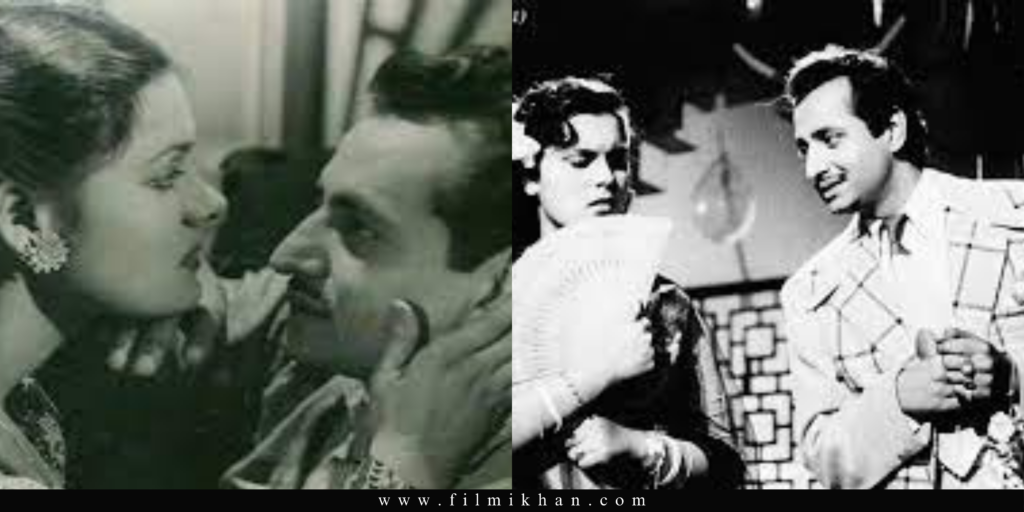In the golden age of Hindi cinema, Kuldip Kaur emerged as a luminary, gracing the silver screen with her timeless elegance and unforgettable performances. She was born on 1927, in Lahore, British India. Kuldip’s journey into the world of Hindi cinema began against the backdrop of an era that would forever shape the cultural landscape of the industry. She belonged to Ladhran royal family in Attari, Amritsar District, Punjab. She was wife of Attariwala royal member Mohinder Singh Sandhu, a grandson of the military commander of King Ranjit Singh’s army, General Sham Singh Attariwala. She got married at the age of 14 and became mother at the age of 16.

Kuldip Kaur’s early foray into acting commenced in the late 1940s when she made her debut in the film “Chaman” (1948), a Punjabi film which turned a block buster at the box office, co-starring Karan Dewan and Meena Shorey. Her ethereal beauty and graceful demeanour captured the hearts of audiences, making her an instant sensation. The enchanting starlet went on to become a quintessential leading lady in the films of the 1940s and 1950s, leaving an indelible mark on the hearts of moviegoers.
Her on and off-screen chemistry with leading actor Pran added an extra layer of magic and gossip to the films she graced with her presence.

In 1947 film industry split many artists left for Bombay (Mumbai now). She left Lahore to Bombay while communal violence was happening all around. Famous story writer Saadat Hasan ‘Manto’ described him a brave lady in his book ‘Stars from Another Sky: The Bombay Film World of the 1940s, a chapter on her titled: Kuldip Kaur: the Punjabi Firecracker, in this chapter he narrated the story of Kuldip how she returned to Lahore in spite of violence, to pick up actor Pran’s car. His car was left behind when they both were leaving for Lahore to Bombay and communal riots happened. She drove the car back alone from Lahore to Bombay.

She worked in films like Baiju Bawra (1952) in which portrayed the character of dacoit queen Roopmati who kidnaps Baiju. Some other films she acted in 1952 to 1954 were Ghungru, Hamari Duniya, Jugnu, Naubahar, Neelam Pari, Sheesham (1952), Aabshar, Anarkali, Baaz, Ghar-Baar, Farmaish, Mashuqa (1953), Dak Babu, Gul Bahar, Pilpili Saheb, Hukumat, Lalpari and Mastana (1954). In 1955 she acted in films like Teer Andaz and Miss Coca Cola. She worked with Madhubala and Ashok Kumar in film Ek Saal (1957). In 1958 she worked with Meena Kumari in Sahara and Panchayat.
Kuldip Kaur died on 3 February 1960, in Bombay of tetanus, following thorn pricks from Ber tree (jujube) during a visit to Shirdi, Ahmednagar District, which she did not care and started working. Her small injury became serious and she died.
Important films of Kuldip Kaur acted in were Ek Thi Ladki, Samadhi (1950), Aadhi Raat (1950), Chhoti Bhabhi (1950), Afsana (1951), Baiju Bawra (1952), Anarkali (1953), Panchayat, Sahara (1958), Rikshawala and Sunahri Ratein (1960).

As the curtains closed on the golden era of Hindi cinema, Kuldip Kaur’s legacy endured, transcending generations. Her contributions to the art of storytelling and the cultural fabric of Indian cinema remain eternally engraved in the hearts of those who witnessed the magic she brought to the screen.
In retrospect, Kuldip Kaur’s cinematic journey stands as a testament to the enduring charm of vintage Bollywood, where grace, talent, and charisma blended seamlessly to create a cinematic legacy that continues to captivate audiences, reminding them of a bygone era of Hindi cinema’s enchanting allure.







